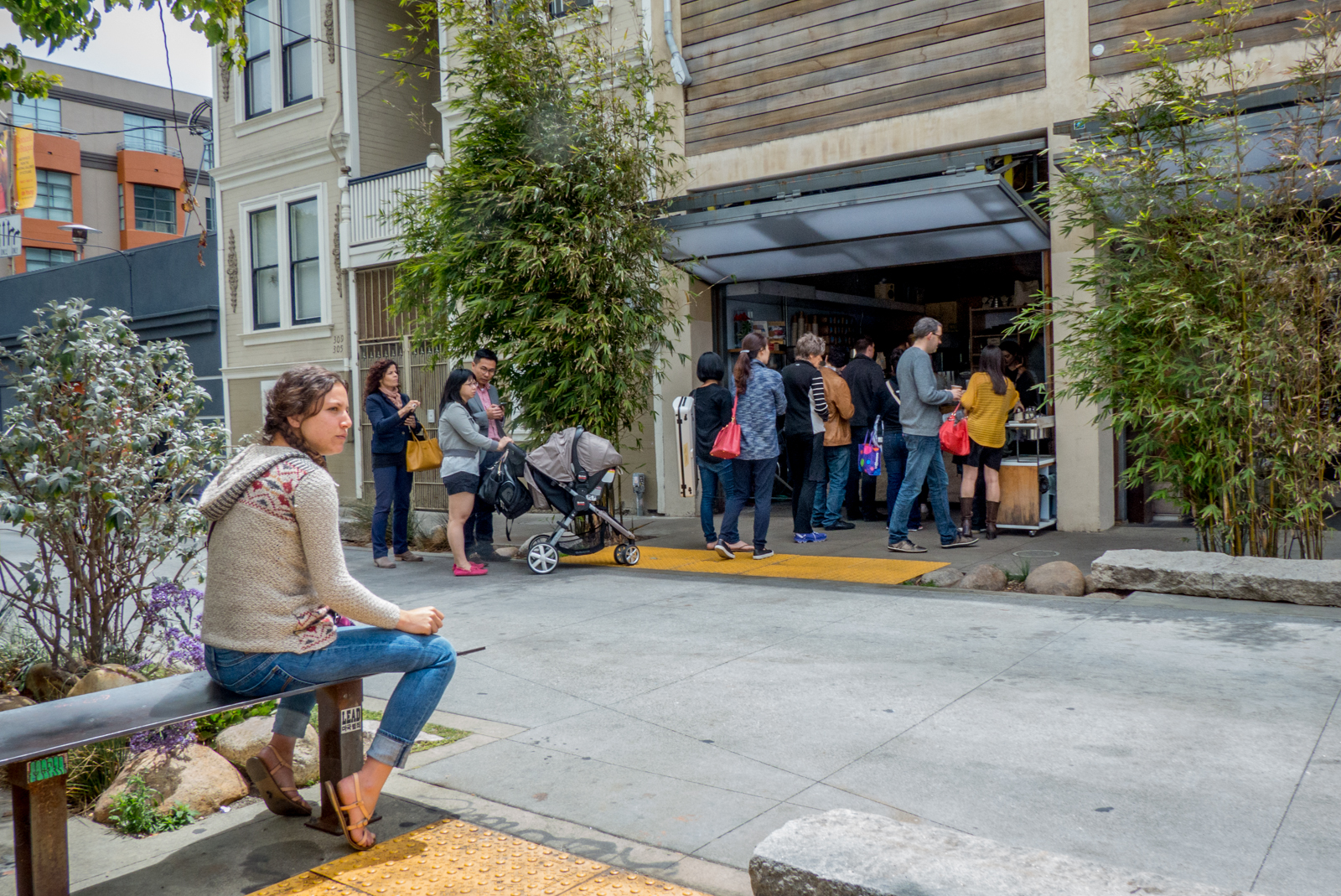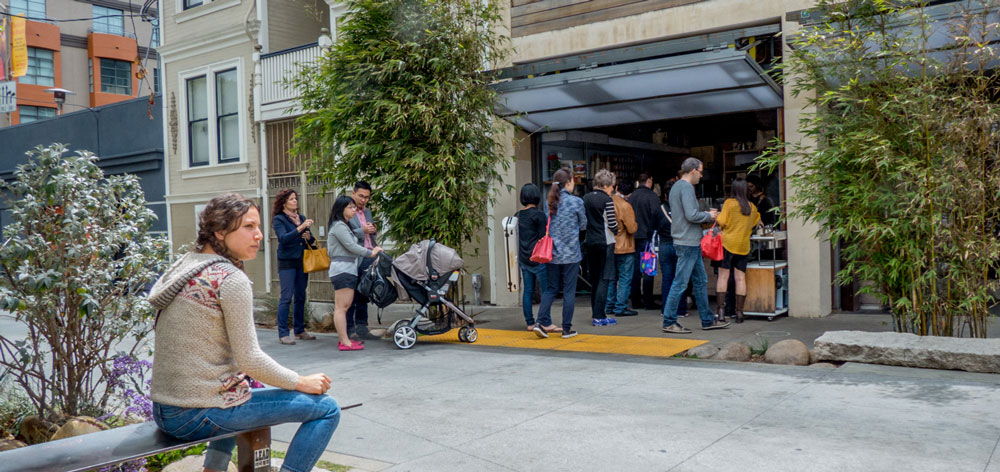In a city where housing is increasingly scarce and expensive, and where commercial rents are skyrocketing, converting garage spaces to new housing and storefronts can help make space for residents and neighborhood-serving small businesses.

Converting garages can also improve neighborhood livability by restoring features like front gardens, green backyards, front porches, storefronts, building lobbies, street trees, and even on-street parking spaces.
For decades San Francisco had off-street parking requirements which precluded garage conversion, but no longer – after progressively chipping away at requirements for more than a decade, San Francisco completely eliminated minimum requirements at the end of 2018. San Francisco still requires off-street freight loading for certain large buildings, and secure bicycle parking in most buildings.
Will conversion of garages mean more competition for street parking? Recent studies suggest it may not. An exhaustive UCLA study found that only 25% of American garages were used to store a car. Three-quarters of garages were used for storage. A 2007 survey of the Mission District found that adding garages to houses had removed 41% of on-street car parking spaces, but that only half of garages were used to store cars. If curb parking spaces are restored when garages are removed, loss of off-street parking can be offset by new on-street spaces. In commercial districts, driveway cuts will be replaced by the high-turnover metered parking spaces helpful to shoppers and neighborhood businesses.
Some bigger societal shifts are also reducing the need for garages. Americans, in particular younger Americans, are driving less. In recent years, the number and percentage of San Franciscans walking, cycling, using transit or employer shuttles, car-sharing, and ride-sharing has increased. New households in San Francisco are overwhelmingly car-free.
What follows is a simplified guide to the new rules. Most of these rules vary by zoning district. To find the zoning district for your property, consult San Francisco’s online Property Information Map. In addition to the Planning Code requirements outlined here, Building Code requirements also apply, and construction permits may be required.
Converting Garages to Bicycle Parking
Any off-street parking space can be converted to bicycle parking.
Converting Garages to Housing
Recent Planning Code changes expanded opportunities to convert off-street parking to housing. Accessory Dwelling Units (ADUs) are now permitted in all zoning districts that permit housing. ADUs can be built without parking spaces, and may convert a parking space to a new dwelling unit. Detached garages and carriage houses may also be converted into ADUs.
Existing housing units can also expand into garage space. Houses and apartments can expand into ground floor spaces in keeping with the ‘rooms down’ standards.
Housing is permitted in the City’s residential, commercial neighborhood commercial, and mixed-use districts. The only areas where parking cannot be converted to housing are the City’s industrially-zoned districts (called PDR districts), and on certain commercial streets where ground-floor residential uses are restricted, specified in Section 145.4 of the Planning Code.
Converting Garages to Storefronts

In districts that permit commercial uses, off-street parking spaces can be converted to commercial spaces.
Removing off-street parking is permitted citywide, however the replacement use may require additional review and approval, depending on the specific use proposed and the rules for the zoning district. Off-street freight loading or bicycle parking that meets current requirements must be retained.
Commercial uses are limited in Residential districts. However, existing commercial uses in Residential districts are grandfathered in, and require no off-street parking. Former storefronts in Residential districts may now be reactivated (Sec. 186), with no required parking. New corner commercial uses are permitted in RTO, RTO-M, RM-3, and RM-4 districts (Sec. 231), and Commercial uses may be conditionally permitted in historic buildings in Residential districts (Sec. 209.9(e)).
All storefronts, existing and new, are subject to the Planning Code’s transparency requirements.
Converting Garages to Community Uses
Community clubhouses, neighborhood centers, and community cultural centers are permitted in most zoning districts, including Residential districts, as are religious institutions, childcare, and other institutional uses.
Reconfiguring Parking
Parking may be also be reconfigured to be more space-efficient, freeing up space for other uses. Several years ago Livable City helped relax the Planning Code’s restrictions on space-efficient parking, and tandem parking is now permitted in all districts, as are lifts and stackers.
Resources
- Accessory Dwelling Units (SF Planning Department). Information on building, planning, and design requirements for Accessory Dwelling Units in San Francisco.
-
Developing Ground Floor Accessory Rooms In Residential Buildings [pdf] (SF Planning Department) A guide to ‘rooms down’ – expanding living space onto the ground floor.
- Standards for Storefront Transparency [pdf] (SF Planning Department). A guide to the Planning Code’s requirements for new or renovated storefronts.




